Looking for helpful travel tips for Colombia? Then you’ve come to the right place! Whether Caribbean beaches, lush jungles, volcanoes, colorful houses and cozy backpacker towns, roaring waterfalls, bustling cities or snow-capped mountains – Colombia has a lot to offer. Our travel reporter Franzi has published a detailed guide about her time in Colombia and, in addition to all the helpful tips, she also presents her TOP 5 sights in Colombia. Enjoy browsing!
- Why Colombia?
- Colombia Sights & Highlights
- Travel Preparation and Entry
- Best Time to Travel to Colombia
- Arrival & Transport in Colombia
- Our Colombia Route & Travel Duration
- Accommodation in Colombia
- Food & Drinking in Colombia
- Safety in Colombia
- Colombia Currency & Budget
- Sights in Colombia – My Conclusion
- About Me
Why Colombia?
“Why do you even want to go to Colombia? Isn’t it dangerous?” We often encountered these questions after we revealed our travel plans. We, too, had read the warnings on the Foreign Office website, as well as a few horror stories. These impressed me more than my boyfriend. In return, however, there were the blogs and YouTube videos praising Colombia’s breathtaking landscapes. These arguments convinced me, and I decided to put my doubts aside.
If there was one thing I had learned on my travels, it was that things are often less bad than they seem. After all, we had already survived more than three months in Mexico, which was considered “dangerous.” We had consciously stepped out of our comfort zone, deciding against a trip to Southeast Asia and instead opted for Mexico and Colombia.
Colombia Sights & Highlights
First of all, Colombia is huge. In the three months we were in the country, we didn’t manage to explore all of its regions. The reason for this was that we were not only traveling but also working online. Nevertheless, we wanted to see as much of Colombia as possible. Therefore, during our first month in the country, we focused on traveling and explored some of Colombia’s highlights.
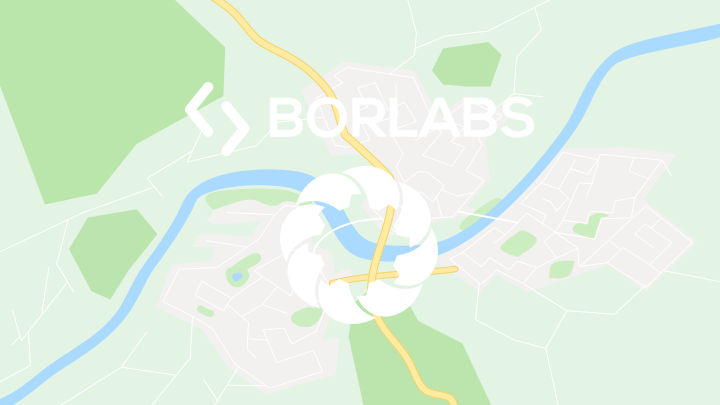
By loading the map, you accept Google’s privacy policy.
Learn more
Load map
1. Jardín – the waterfall paradise
My absolute favorite place in Colombia is Jardín. This small town is located three hours south of Medellín and is still an insider tip. Colorful houses, a picturesque main square, locals riding through the town – it couldn’t be more authentic. Added to that is the stunning natural beauty surrounding Jardín. Be it the red Andean cocks of the rock that gather in the river valley every afternoon or the green hills covered in coffee. Although Jardín isn’t officially part of the Coffee Triangle, coffee is still grown here, which is why there are a surprising number of cozy cafes.
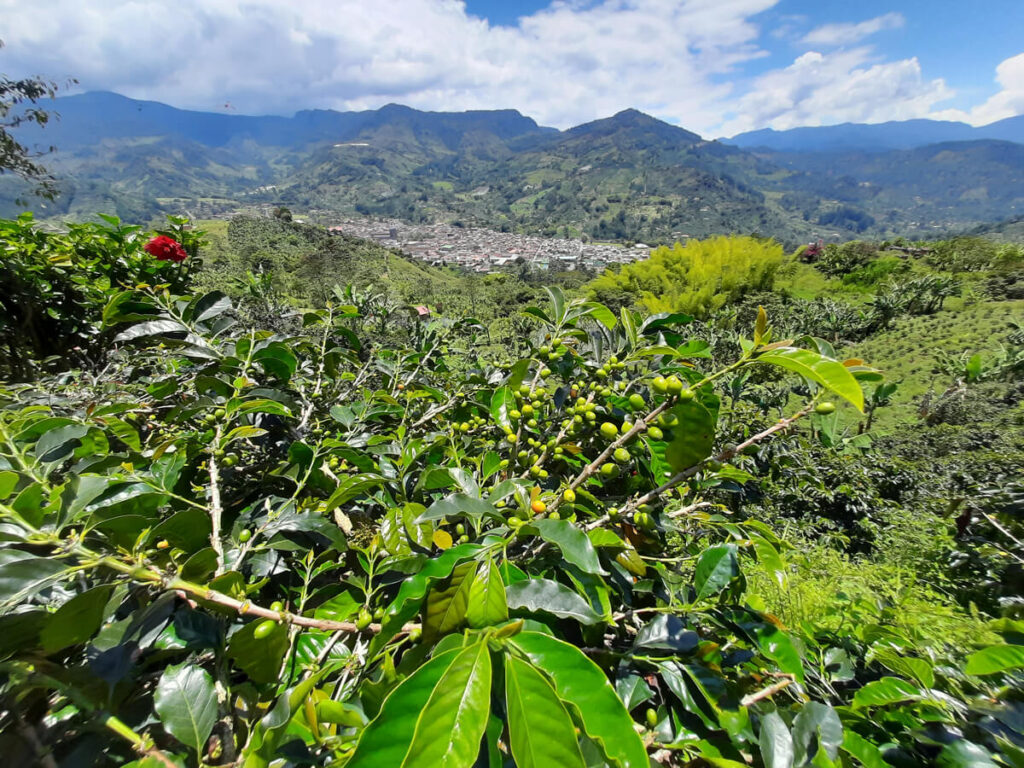
But the real highlight are the waterfalls. We skipped the tour to the Cueva del Esplendor, a cave waterfall. Instead, we took a strenuous, sweaty, and muddy hike to five other waterfalls. The trail wasn’t marked, but a Colombian couple helped us, and we climbed down to the Cueva de los Guácharos using ropes. By the end of the day, we had seen all the waterfalls and experienced an unforgettable hike.
2. San Gil – More Than Just Action
San Gil is considered the adrenaline capital of Colombia, as it offers all kinds of activities to get your adrenaline pumping. But that’s not the reason I loved this place so much. For me, it was the stunning scenery around San Gil. We rented a moped and set off. Among other places, we visited the Juan Curi Waterfall. But the real highlight was the Balneario Pescaderito, a river that is repeatedly dammed by rocks. The result is numerous pools with small beaches – a dream!

From San Gil, we also visited Barichara, supposedly one of the most beautiful small towns in Colombia. To get there, we had to take the bus and reached the town with its white houses in less than an hour. Barichara impresses with its charming alleys and courtyards and offers fantastic hiking trails. Unfortunately, we weren’t feeling well that day – keyword: food poisoning – and decided not to go on any long hikes.
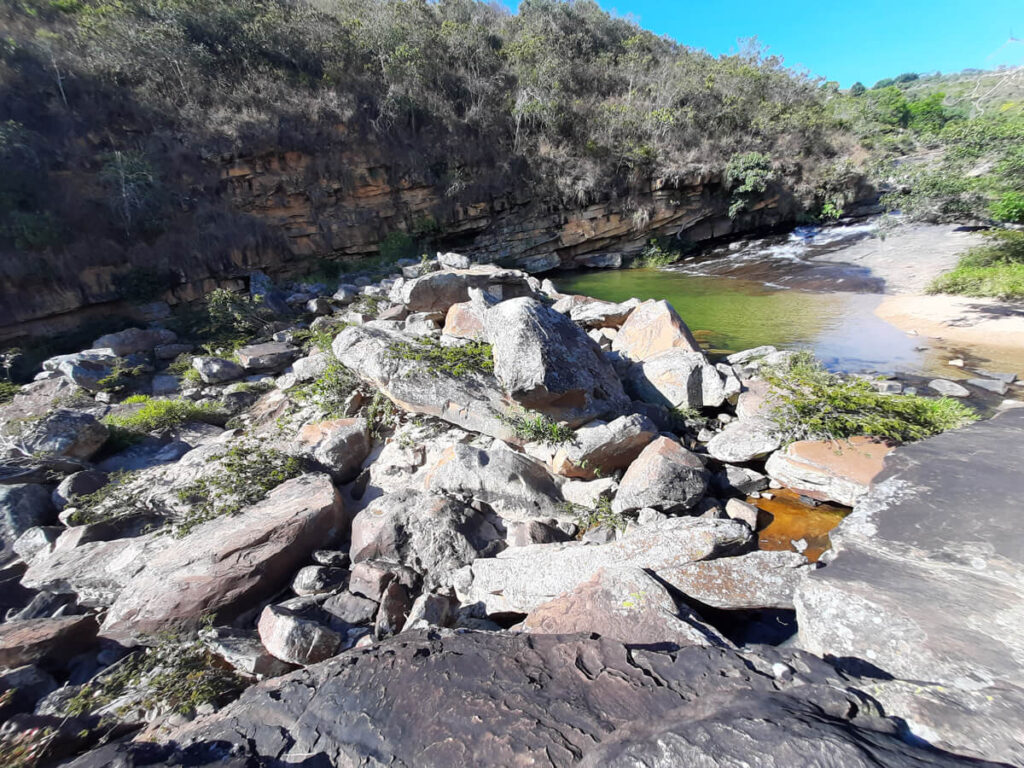
A few days later, we visited the Chicamocha Canyon. This is the second largest canyon in the world and one of the best places for paragliding. While I just watched as a companion, my boyfriend returned from the flight thrilled.
3. Palomino – the backpacker’s dream
This small town is located on the Caribbean coast of Colombia. However, you shouldn’t imagine a Caribbean dream beach here. It’s even worse, because large parts of the beach have been washed away, and the water is eating its way further inland. Even though that doesn’t sound like ideal conditions, we actually extended our stay in Palomino. This is primarily thanks to our accommodation. We had a small bungalow with a hammock and lounge chairs, as well as a pool and two adorable cats.
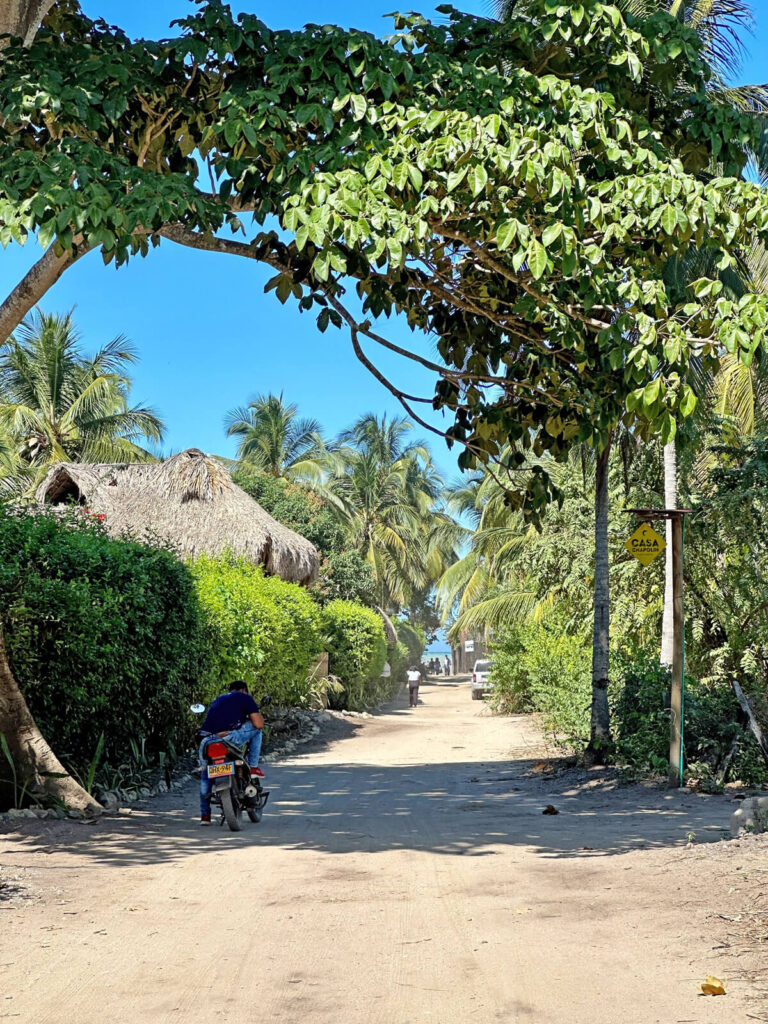
Combined with the friendly staff, we couldn’t help but stay longer. But Palomino itself, with its laid-back vibe, also enchanted us. As soon as you get off the bus and leave the main road, there are only dirt roads. Shops, restaurants, bars, and accommodations line the left and right. All of this creates an atmosphere that makes you want to linger.
4. Medellín – An Amazing Transformation
Medellín, once known as the most dangerous city in the world, was our first stop in Colombia. In fact, we ended up spending most of our time in and around Medellín. But let’s start from the beginning. Our first accommodation was in Envigado, not even in Medellín. From there, we explored the city for five days. We did two informative free walking tours, one in the Centro Historico and the second in Comuna 13. We learned all about the incredible transformation Medellín has undergone and why the metro is the city’s pride and joy.

From Medellín, we took a day trip to Guatapé. We took a bus and dropped ourselves off at the foot of El Peñol de Guatapé, a huge monolith with countless steps leading to the top. The view of the unique lake landscape from above was incomparable. Guatapé itself, a cute little town, was also worth seeing.
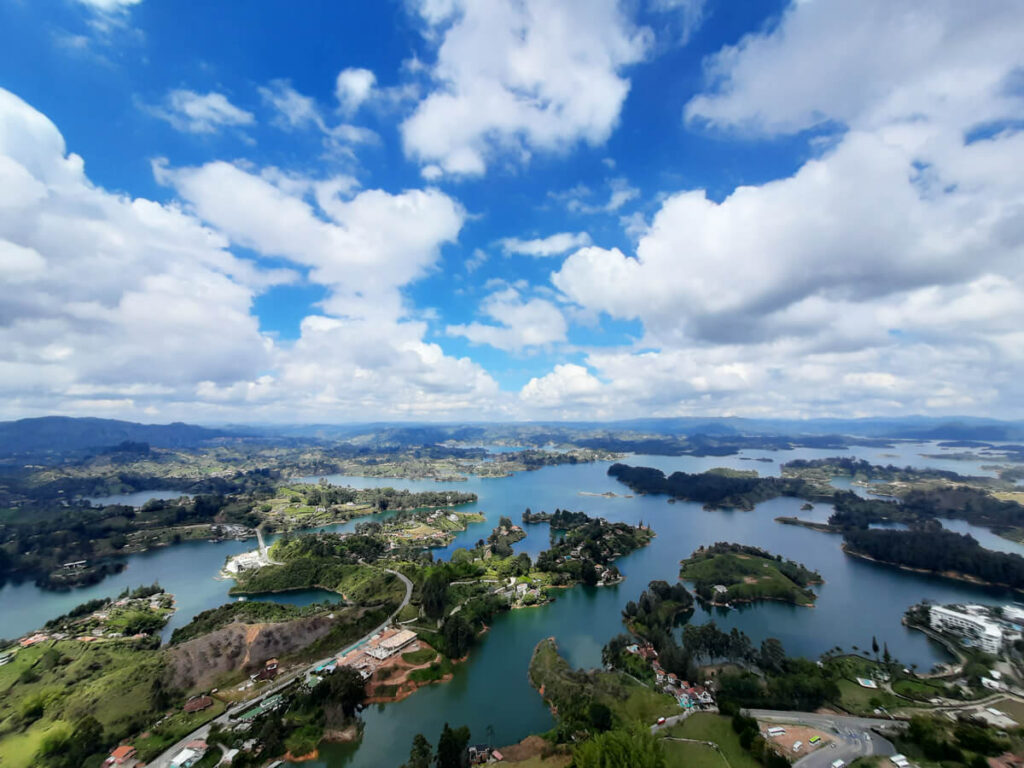
While our first visits to the city were focused on exploring the sights, we later gravitated to the more popular districts. We spent a longer time in Laureles. We personally found this district more beautiful than the hyped El Poblado. We also spent a month in the cloud forest of Medellín in El Retiro. There we had a house in the countryside and, with El Retiro, a cute little town within walking distance. Motmots, hummingbirds, and toucans were constantly mingling in our garden while we worked.
5. Tayrona National Park – Colombia’s most beautiful beaches
Last but not least, Tayrona National Park is one of my Colombia highlights. We had to hurry to visit it, as the national park closes for two weeks several times a year. During this time, nature has a chance to recover. On top of that, the paths are being repaired and the indigenous tribes hold ceremonies. This exact moment was approaching, which is why we flew from Medellín to Santa Marta as quickly as possible and headed straight to the national park from there.
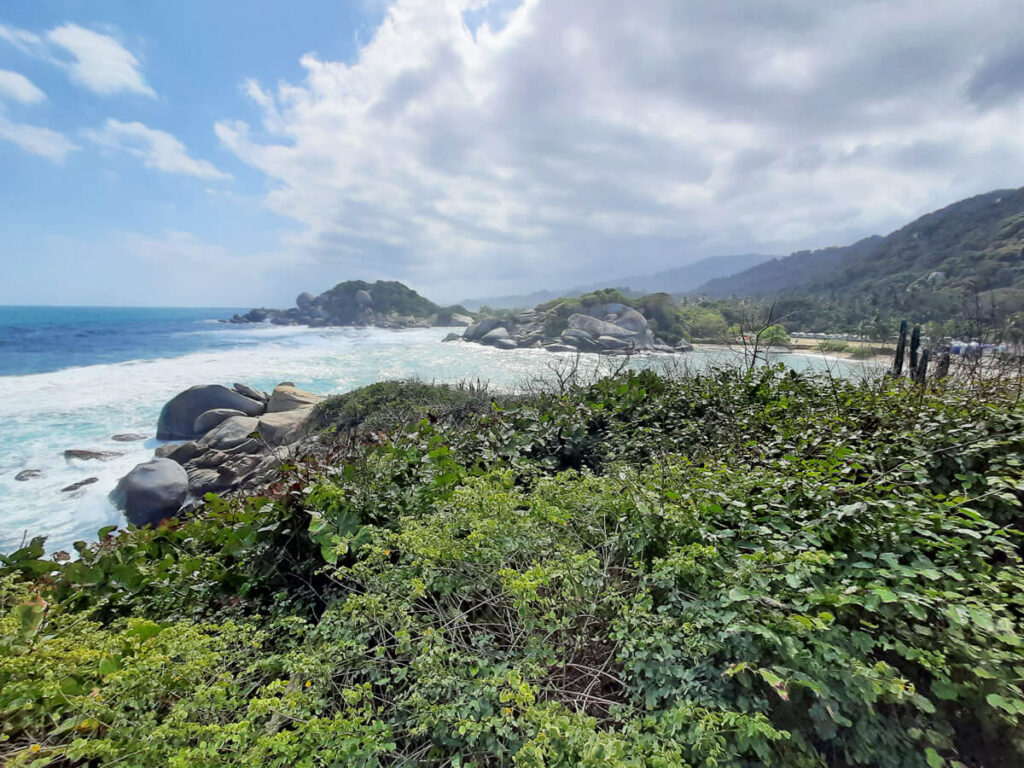
We decided against spending the night in the park. Instead, we spent one day hiking to the most beautiful beaches. Our favorite was La Piscina, as it was much quieter than the popular Playa del Cabo. Apart from that, the hike was beautiful. There are always unique views of the sea. On top of that, monkeys crossed our path.
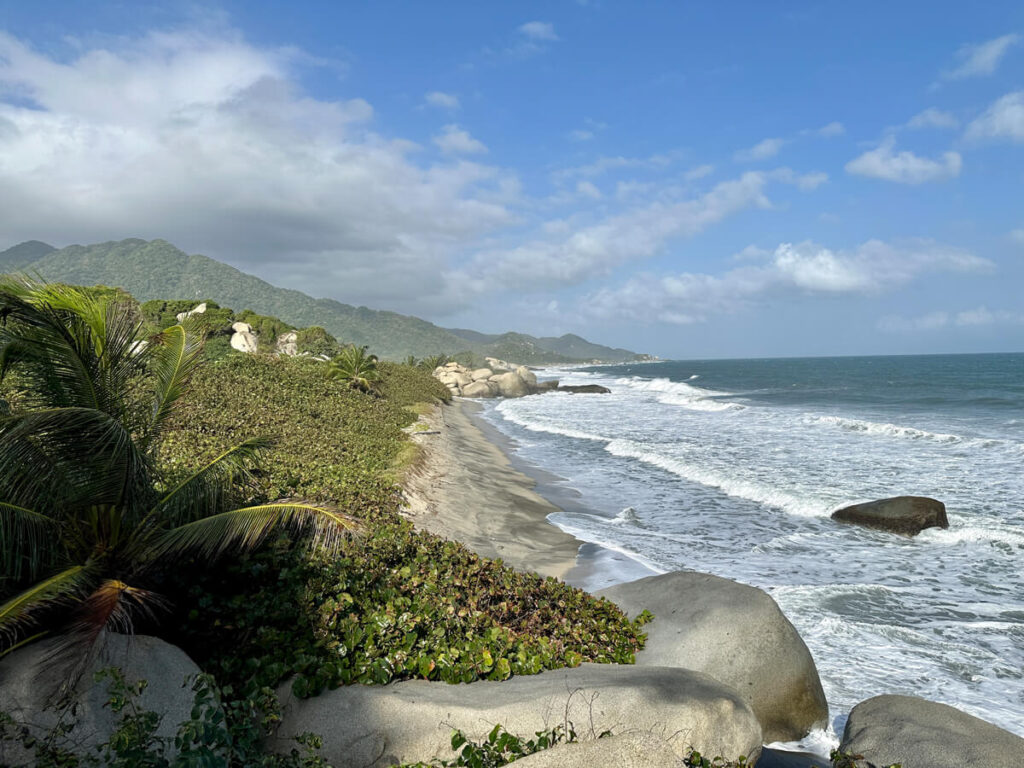
Travel Preparation and Entry
Since we visited Colombia on the train of our third long-term trip, we had already received several vaccinations, some of which were updated. This was different with the yellow fever vaccination, which is recommended for Colombia. In Germany, this can only be administered by a certified yellow fever vaccination center. Regarding vaccinations, it’s best to make an appointment with a tropical medicine specialist. In addition, we have long-term international health insurance to be covered just in case.
As a German citizen, you don’t need a visa and are granted 90 days of visa-free entry upon entry. Theoretically, you need proof of departure for Colombia. We took a chance and didn’t get an Onward Ticket. We were promptly asked at check-in at the airport in Mexico. We truthfully said we would be traveling overland to Ecuador. This answer was enough to get us on board the plane.
Best Time to Travel to Colombia
Anyone planning a round trip through Colombia never has the problem of traveling throughout the entire country during the best travel time. While July and August are the driest months in the Andes, the Amazon, and the Pacific coast, this is not true for the Caribbean coast. There, however, the best time to travel is from December to April. The best time to travel to Colombia is generally during the two dry seasons, from December to March and from July to August.
We were in Colombia from mid-January to mid-April. On the Caribbean coast, for example, there was a tropical rain shower every day, but apart from that, it was sunny. In the interior around San Gil and Villa de Leyva, beautiful high-pressure weather was impressive. In El Retiro, we initially had to contend with rain, but then bright sunshine, followed by rain and gray weather again.
Unfortunately, the probability of rain remained high in Medellín and the coffee region over the following weeks. Finally, the weather was nice in Cali, and we were lucky again in Ipiales on the border with Ecuador. However, at an altitude of almost 3,000 meters, it was really cold at night. In short, you must always be prepared for rain in Colombia. Most rain showers are limited to the late afternoon or evening and can be planned around your activities.
Arrival & Transport in Colombia
Our journey was comparatively short, as we flew from Mexico to Medellín. From Germany, there are direct connections to Bogotá. Alternatively, you can make a stopover. If you are currently in Panama, you can cross to Colombia by boat. From Ecuador, it is easy to travel by land. While you can travel by boat from Peru and Brazil to Leticia in the Amazon. From there, however, you will need a domestic flight.
Flights are a good option for covering longer distances within the country. Most bus journeys take longer than stated and can be strenuous, especially in the mountains. For long distances, it is worthwhile to take a night bus, but these are usually freezing cold. In general, buses in Colombia are a safe way to get around, and there are certainly luxurious options available.

We booked most buses using the RedBus app, as tickets are discounted there. If we couldn’t find a connection, we went to the bus station and bought a ticket there. To get from the bus terminal to our accommodation, we used Uber in Bogota, Medellín, and Cali. Otherwise, we simply took a taxi or walked.
Renting mopeds is unfortunately rarely possible in Colombia. We only found accommodations in Minca and San Gil, where the fun cost us at least €20 per day. It was worth it to us, as we were able to explore the area on our own.
Our Colombia Route & Travel Duration
Since we weren’t just traveling but, as mentioned, also working online, we stayed in the country for three months. We started in Medellín. We had reserved accommodation in Envigado in advance. From there, we flew to Santa Marta and drove directly to Tayrona National Park. We then continued on to Palomino for a few nights. The next stop was Minca, where we went on a birdwatching tour and rode a motorbike to the waterfalls.
After a few hours’ stop in Santa Marta, a horrific night bus ride awaited us because I had caught food poisoning. After recovering from that, we explored San Gil and the surrounding area. We then traveled to Villa de Leyva for two nights, where we visited all the highlights on foot.
Then we stopped for one night in Bogotá and drove to El Retiro, where we stayed for a month. Unfortunately, we couldn’t continue our journey after that because we were waiting for credit cards from Germany. These were supposed to arrive at the DHL shop in Medellín, so we stayed there for another two weeks. After that, we went to beautiful Jardín, where we then spent one last night in Medellín. The next stop was Salento, where we visited the Valle de Cocora. We then continued on to Cali for ten days.
The main road to Pasto was destroyed due to a landslide, and we had no reliable information about how long the bus journey would take. So we decided to fly to Pasto and continue our journey from there to Ipiales. Here we visited the famous church before crossing the border the next day and leaving Colombia.
Accommodation in Colombia
We reserved all our accommodations in advance on Airbnb or Booking*. This was usually possible at short notice, except during Easter when many hotels were fully booked. In Medellín and Cali, we found that Airbnb offered the best value. Here we paid an average of €30 per night. The rooms on Booking.com were all perfectly fine, and often breakfast was even included, for around €20 per night.
Our only disappointment was a moldy room in Salento. Since our health was more important to us, we moved out and had to find a new room for Easter in one of the country’s most popular holiday destinations. We subsequently complained to Booking.com and received a voucher.
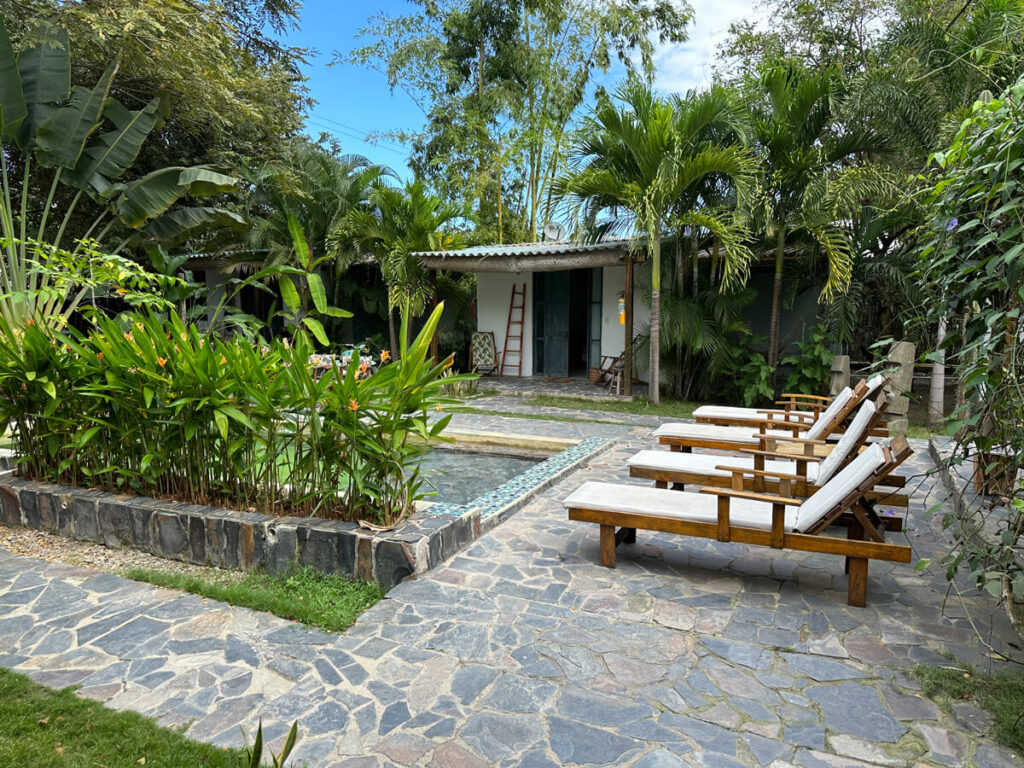
Food & Drink in Colombia
To put it mildly, Colombian cuisine isn’t exactly known for its refinement. Often, it lacked flavor and was dominated by rice and beans. So, unfortunately, there isn’t a specific dish I would recommend. Furthermore, Colombian cuisine is very meat-heavy, which was often a challenge for me as a part-time vegetarian. However, in the larger cities, you’ll find a wide selection of vegetarian and vegan dishes. We often opted for the “Menú del Día,” which sometimes cost only two euros. A good deal that fills you up.
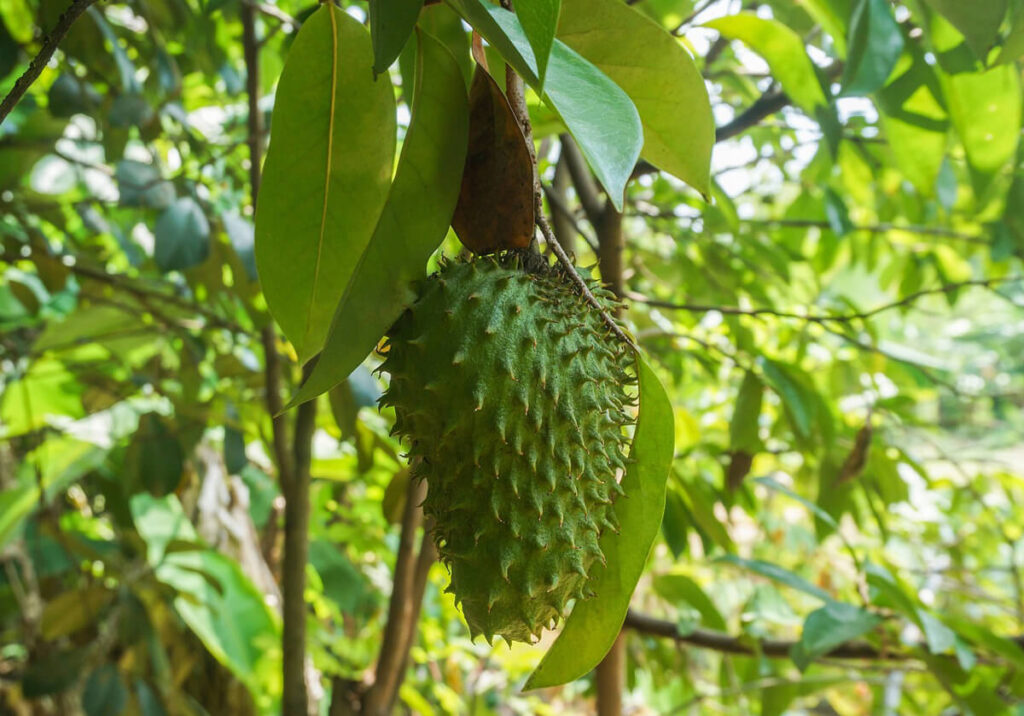
What undoubtedly wins you over in Colombia are the fruits. Ever since we tried the yellow dragon fruit, which tastes juicy and sweet, we’ve practically despised the pink variety. Moreover, there are so many fruits we’ve never seen or eaten before. Here we also tried guanabana, granadilla, and lulo for the first time—they were absolutely delicious. So, cheers to the fruits in Colombia. We can also speak highly of the coffee. Fortunately, a café culture has been developing in the country for several years, and so we were able to enjoy a delicious flat white in every city.

Safety in Colombia
One topic that immediately comes to mind when thinking about Colombia is safety. No wonder the country is associated with drugs, Pablo Escobar, and a high crime rate. A look at the Foreign Office website doesn’t help. Nevertheless, we dared to go, and within three months, nothing even remotely happened to us. Only Santa Marta seemed pretty deserted on a Sunday afternoon. There were also a few “strange characters,” which made me feel a little uneasy. The same thing happened to us in the evening in Bogotá.
To avoid any harm, we followed a few rules. First, the saying “No dar papaya!” applies, especially in the cities. This essentially means that you shouldn’t display your valuables. However, as soon as you reach rural areas, you realize how safe it is. We went hiking alone, rode our mopeds alone, got into random taxis, and went home after dark. So be vigilant, especially in the cities. Listen to your gut and use your common sense, and then nothing will happen to you in Colombia.
Colombia Currency & Budget
In Colombia, payment is made in Colombian pesos. When we were there, we got 5,000 COP for one euro, which was not only easy to calculate but also a very good exchange rate. Overall, Colombia is incredibly affordable; I spent only €28.60 per day. During the month we were in one place in El Retiro, it was only €20.80. However, we relied entirely on self-catering here. Admittedly, we don’t travel fast; we usually make our own breakfast, and we prefer self-organized excursions to tours. But in terms of price, Colombia can easily compete with Southeast Asia.
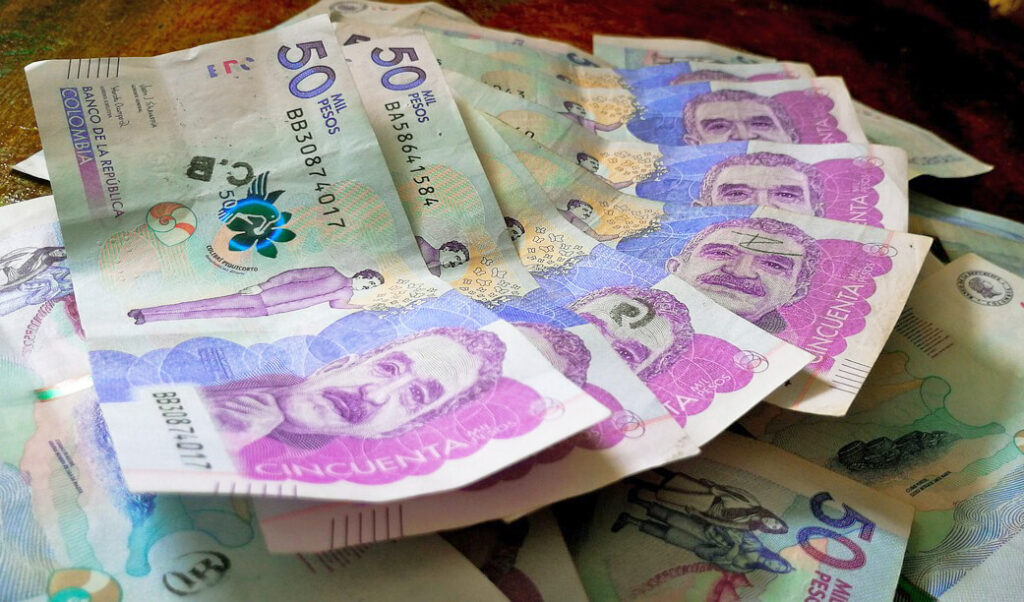
Sights in Colombia – My Conclusion
Is it worth traveling to Colombia? I would answer this question with a resounding yes. Although I didn’t like the cities in Colombia, apart from Medellín. The nature is all the more impressive. Colombia has everything: tropical beaches, rainforests, volcanoes, cloud forests, and snow-capped mountains. On top of that, it’s easy to get from A to B in the country, and it’s incredibly cheap.
Oh, and we survived without Spanish. I understand Spanish well now, but speaking it still struggles. But in times of need, Google Translate always helped. As you can see, there’s no reason not to visit Colombia. So put your doubts aside, step out of your comfort zone, and dare to do what we did. Traveling through Colombia and the country with its fascinating nature and friendly Colombians won’t disappoint you.
About me
I’m Franzi (click here for my blog | or Instagram) and I’m originally from Wittenberge, which is almost exactly between Hamburg and Berlin, but most recently lived in Göttingen. My boyfriend and I are currently on our third long-term trip. The difference is that this time we’re also working remotely. I feel like the passion for travel has always been in my blood. During school holidays, I always traveled abroad in Europe with my former club. But after my first visit to New Zealand in 2011, I wanted to see more of the world, and so I set off on my first long-term backpacking trip in 2014.
This was also my most exciting trip, because it was my first time traveling alone, my first time with a backpack, and my first time in Asia. Add to that a moped accident, a scammed credit card, and a (briefly) lost backpack, to name just a few of the adventures. I’d also like to visit Patagonia, the South Seas, Botswana, Japan, Nepal, and always return to New Zealand and Southeast Asia.